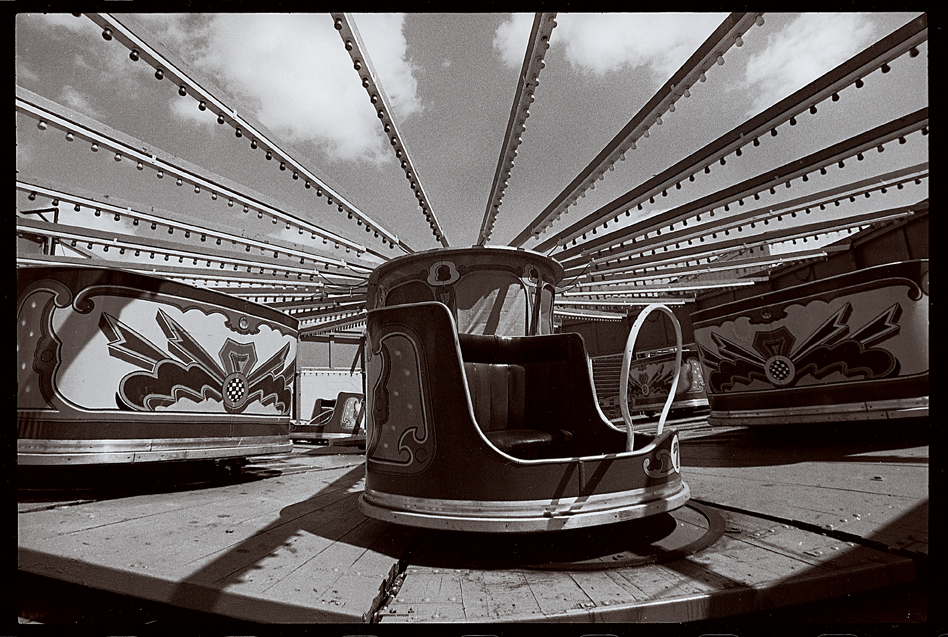I was recently urged to search my way-way-back B&W archive for an image of a long ago departed local Newburyport character, Duncan Chase. He was the local drunk who had an acute fondness for loudly proclaiming to all passerby that he was “a cool, cool cat from New York City” and that he “walked the line…yeoahhhh”. Many afternoons he could be found slumbering in sunlight-warm doorways and sharing that warmth with an empty whiskey pint right next to him.
But that’s not what I want to talk about here. While searching the way-way back archive, I stumbled across a couple of B&W negatives that are of major significance for me. The one below, Joy Ride, is on my top ten, all time life time list. I have a silver gelatin, split toned, selenium print of it on my wall as I post this. I fondly remember making the print back in Newburport, and I recall how amazed I was that I finally learned the nuance of split toning. The print has been on my wall almost everywhere I’ve lived since I made it.
So what’s so cool about it? To start with, it’s a seriously gorgeous print. But the image itself is one that can walk and chew gum at the same time. Back when I exposed the film for this image, a friend lent me a real short focal length Nikon lens. I was using a Nikkormat then, and I was enamored by images from short focal length lenses. In previous posts, I’ve talked about the importance of Salisbury Beach for me. Joy Ride was taken at Salisbury Beach at the end of the summer season, a day or two before workers folded everything up for the winter. Even at the time of exposure, I knew I had a winner. It wasn’t until later, much later (like years later) that I fully grasped the graphic impact of the designs on the cars, the punctuation of the light bulbs, and how the white lazy clouds are layered onto the sky, yet behind the ride itself.
Mine is a small print, nine inches wide. After twenty-five years, a print may be labeled as a vintage silver gelatin print (VSGP in galleryspeak). Joy Ride is now in that club; after nearly forty years, time’s patina has washed over my Portriga Rapid Afga paper print with a gloved hand, gently burnishing it with a soft blush of autumnal mellowness. (Do I sound like I miss wet process printing and the darkroom? Yar, you betcha!) Sure, I know how to replicate split toning in Photoshop, and sure I wanted you to see what my little print looks like; but trust me on this one, digital can’t come close to what time has meticulously rendered without bytes, without digital tools, brushes or filters. Without asking it, time has done its job on my print of Joy Ride like it has etched the lines and wrinkles on my face. Ever since Nicéphore Niépce, everyone has agreed that, if nothing else, photography is about time.

